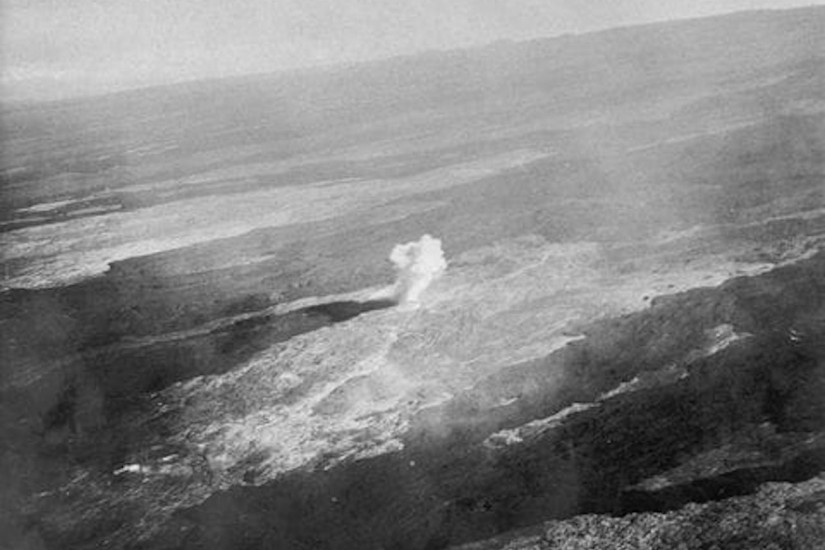But bombing a volcano had never been tried before.
Jaggar needed help, so he contacted the U.S. Army Air Corps, stationed in Oahu, about 200 miles away. Enter a lieutenant colonel named George S. Patton.
Years before gaining fame as the World War II general who helped liberate Germany from Nazi forces, Patton was given the responsibility of orchestrating the first-ever aerial bombing of a volcano, according the USGS.
On Dec. 27, 1935, 10 Army bombers, then biplanes with cloth wings, set out to defeat nature, according to Historic Wings, an online aviation magazine. Each plane carried two 600-pound demolition bombs.
The mission: Bomb the lava flow source.
The planes dropped 20 bombs on Mauna Loa that day, five landed directly in the lava flow, creating giant craters that were quickly filled by the molten rock. The other bombs missed and one even turned out to be a dud.
Then everyone waited.
About a week later, on Jan. 2, the lava stopped. Jaggar was jubilant.
“The experiment could not have been more successful; the results were exactly as anticipated,” Jaggar told the New York Times.
While Jaggar was certain his plan had worked, other scientists were less confident.
In his 1983 autobiography, Harold Stearns, a government geologist who had flown in one of the bombers, wrote of the Mauna Loa bombing and its apparent success.
“I am sure it was a coincidence,” he said.
Even Jaggar’s boss at the time, Hawai’i National Park Superintendent E.G. Wingate had his doubts. In a December 1935 report, Wingate wrote, “Just what part the bombardment had in stopping the lava flow the superintendent is not qualified to say. Certainly the facts are most interesting and Dr. Jaggar believes the experiment to have played a definite part.”
Scientists in later years also viewed the bombing’s effectiveness with skepticism. According to a scholarly article published in 1980 in the Bulletin of Volcanology, the effort was “without significant success.”
Additionally, local Hawaiians were disturbed by the bombing, but they weren’t upset over whether it worked or not. They believed the practice to be an affront to Pele, the Hawaiian volcano deity.
